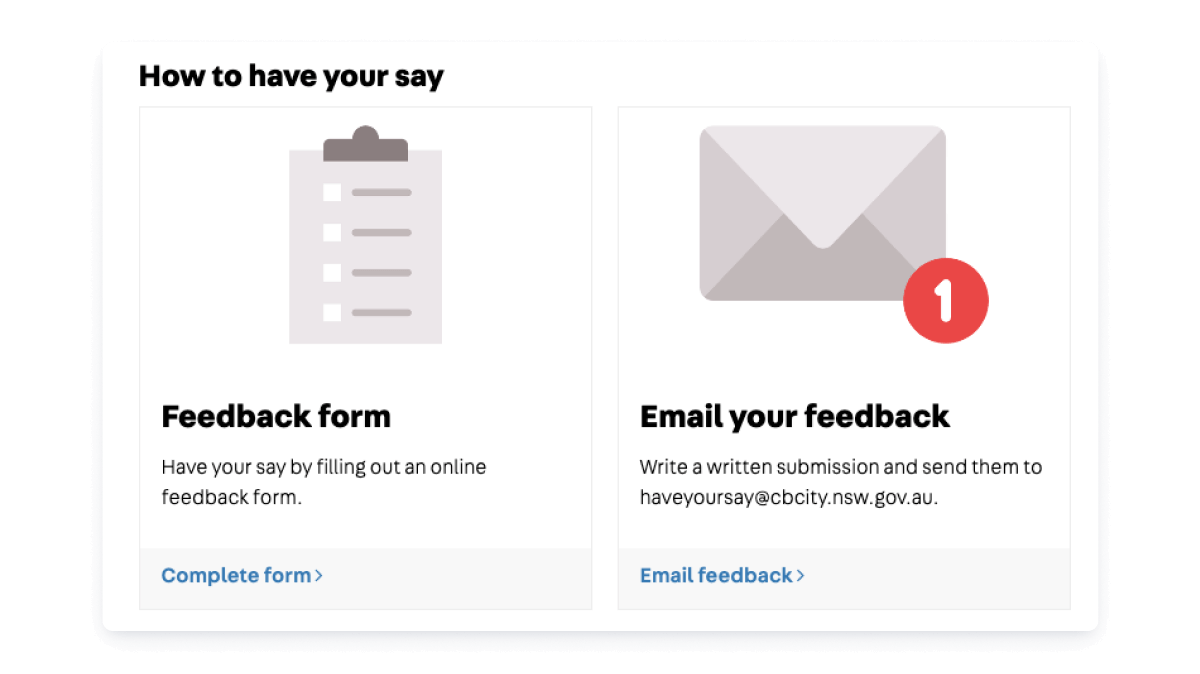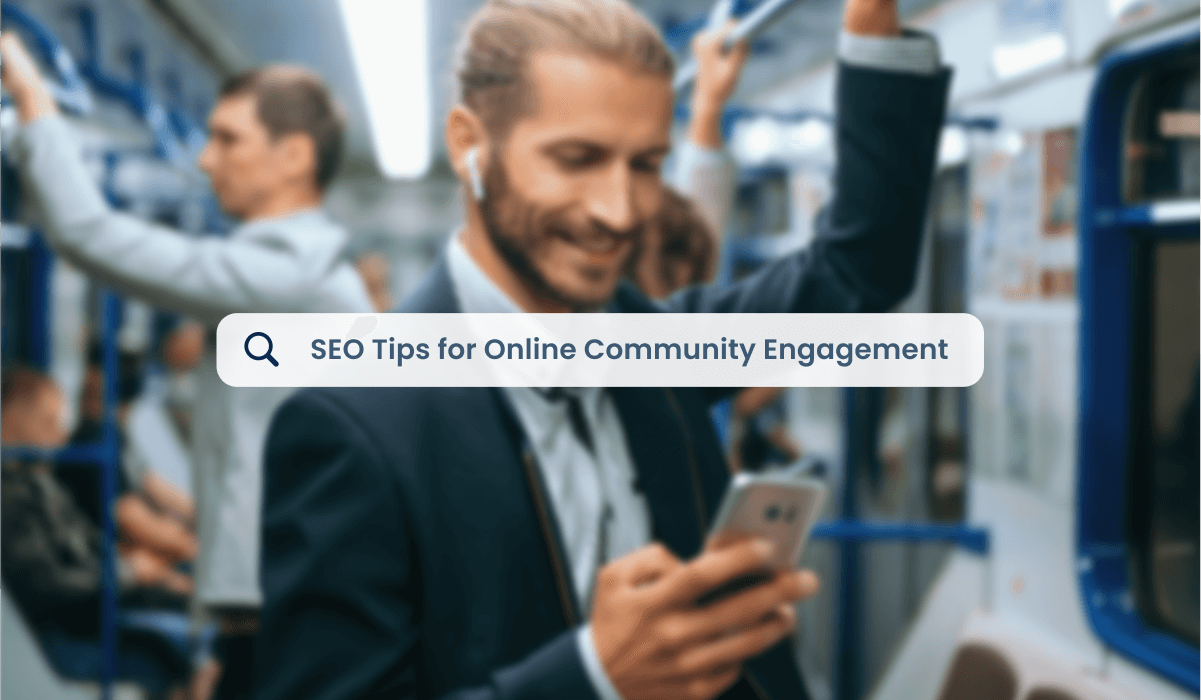As citizens increasingly turn to the internet to voice their opinions, share feedback, and seek information, it’s important that we show up in those key moments. Understanding and implementing Search Engine Optimization (SEO) strategies will enhance the visibility and reach of your online engagement initiatives so you can connect with your community at the right time.
You see, your community expects to reach you online. Whether it’s for information or interaction, when they conduct a quick search, they’re expecting the right result to appear. But, simply creating an online presence is not enough to reach the right audience.
With an effective SEO strategy in place, you can amplify the visibility of your community engagement initiatives and consistently increase the reach of your efforts.
Thankfully, SEO is not nearly as scary as it seems. And the steps to set yourself up for success are simpler than you might think.
What is SEO, and why is it important?
Before delving into the tips, it is crucial to grasp the significance of SEO in the context of community engagement. Simply put, SEO is the process of growing the visibility of a website or a web page on search engine results pages (SERPs). This means that your relevant audience can easily find and engage with your content.
For example, if you were conducting a corridor study of the I-5 through Downtown Seattle and you were inviting the public to contribute initial feedback then it would be useful if your project appeared for the following search results:
- Downtown Seattle corridor study
- Provide feedback for I-5 corridor study
- Downtown Seattle I-5 corridor improvements
If you aren’t showing up, then search engines aren’t classifying your content as useful or relevant enough. So, to combat this, we can make a few easy adjustments to improve the chances of appearing in the top search results.
And just to be clear, when we are talking about search results, we mostly mean Google Search. Currently, Google still handles more than 90% of all internet search queries.

Quick tips for enhancing SEO for community engagement.
Whilst there are a whole host of technical factors that go into SEO, the most important thing you can do is make sure the content you publish is reliable, authoritative, up-to-date, and easy to find.
To help your content meet these standards, here are 5 simple tips you can implement today:
- Understand the power of keywords
- Craft SEO-friendly headlines
- Create high-quality, valuable content
- Optimize metadata and URLs
- Leverage internal linking
1. Understand the power of keywords.
Keywords are the foundation of successful SEO. For most content pieces, conducting thorough research to identify relevant keywords and phrases that will resonate with your audience is essential. In saying that, keyword research for community engagement is pretty straightforward!
Most of the time, your keywords will have a direct correlation with the project of focus. So, if we take our I-5 Corridor Study project as an example, you’d want to ensure ‘Downtown Seattle I-5 Corridor Improvements’ is incorporated throughout your content.
Ensure that your keyword is placed in your title tag, headline, paragraph headers, and body text. But, be cautious, your keyword needs to sound natural and shouldn’t be forced into text where it doesn’t fit – this is called ‘keyword stuffing’.
Further resources on keywords:
2. Craft engaging and SEO-friendly headlines.
Headlines play a vital role in capturing the attention of your audience and search engines alike. Ensure your headlines are both catchy and optimized for SEO by using the appropriate header tags.
Header tags are an HTML element used to designate headings, usually from H1 to H6. You should use your related keywords in your headings and organize them appropriately. And, as a rule of thumb, each page should only have one unique H1 that described the main topic; this is often created automatically from your page title.
From here, you should ensure that your content is organized with sub-headings. This will not only make your content more scannable but also boost its visibility in search results.
If the title of our page is Downtown Seattle I-5 Corridor Improvements, we could include the following sub-headings to organize content:
- H2: Shaping Downtown Seattle’s I-5
- H3: Feedback So Far
- H3: How to Provide Feedback on I-5 Corridor Improvements
- H2: Opportunities to Have Your Say on I-5 Corridor
- H3: Take a Survey
- H3: Pinpoint Areas of Improvement
- H2: What’s Next for the I-5?
Further resources on headlines:

3. Create high-quality, valuable content.
We hope this one isn’t too obvious, but engaging content is the heart of successful SEO. If you’re providing valuable and engaging information and solutions to the queries and concerns of your community then you’re off to a great start! Google favors fresh, well-research content, so ensuring your pages are kept up-to-date and relevant will improve your search rankings.
So, in the context of community engagement and our I-5 Corridor Improvements project, you could:
- Include a project timeline with key milestones and phases that you can update as the project progresses.
- Utilize a Social Map to gather location-based feedback within the study area and allow participants to pinpoint key opportunities or challenges.
- Attach relevant documents, images, or videos to enhance your content and provide additional avenues of media consumption and learning.
- Create an FAQ section to help address key questions or concerns that have arisen from the project so far.
Further resources on content:
4. Optimize metadata and URLs.
Metadata? Optimizing URLs? We swear this isn’t rocket science. And, thankfully, within Social Pinpoint, our SEO section in Page Settings allows you to make all of these adjustments very fast.
Let’s start with metadata.
This information is what users will first encounter when they land on the SERP. So, crafting compelling meta titles and descriptions will leave a great first impression to draw in searchers and increase traffic.
Your meta title should summarize your page, include your target keyword, and stick to a 50–60 character limit. Your meta description should expand on and complement your title, we also suggest keeping the length of your description to 120–158 characters.
Here’s a compelling and descriptive example for our I-5 Corridor Improvements:
- Meta title: Downtown Seattle I-5 Corridor Study – Provide Feedback
- Meta description: The City of Seattle invites the public to provide input and consideration on where improvements are most needed.
Now, how about optimizing URLs?
Well, most page titles actually make perfectly optimized URLs, as long as they are simplified, and don’t contain any special characters or spaces.
Therefore, the URL for our example would be: downtown-seattle-interstate-5-corridor-improvements.
Further resources on metadata and URLs:

5. Leverage internal linking.
Internal linking not only helps users navigate through your community engagement site but also assists search engine crawlers in discovering and indexing your content effectively. Internal links are really useful for establishing site architecture and showcasing related content.
Within the community engagement space, we see a lot of our clients host their participation tools within additional sub-pages. This not only helps add additional structure to their project content, but helps direct the community to the exact area/s to submit feedback.
And, if a project is near completion, or there have been a lot of updates, internal linking ensures your community has easy access to the most up-to-date and relevant information about how their feedback has shaped the end result.
Further resources on internal links:

A quick mention of technical SEO (the slightly scarier SEO).
So far, the tips and strategies mentioned are all elements of SEO you should have control over. However, there is another element to SEO that could be impacting your overall SEO success – technical SEO.
Technical SEO is the slightly scarier, more complex side of SEO. This is all to do with optimizing your website so it’s not only easy to crawl and index by Google’s standards, but that it also provides a positive (and fast) user experience.
Utilizing an online community engagement platform that meets these standards and provides a seamless user experience across all devices will positively contribute to technical SEO. Not to be biased, but Social Pinpoint’s responsive and accessible design meets these standards and invites interaction from your community.
Key takeaways
- SEO is the process of growing the visibility of a website or a web page on search engine results pages – and it’s much more simple than you may think!
- Make sure the content you publish is reliable, authoritative, up-to-date, and easy to find. For a lot of projects, especially ones that invite interaction and engagement from your audience, they may be already boosting the visibility of your page for you.
- Small shifts in how your write, and adjusting settings on some of your pages could make a huge difference in the long run.












